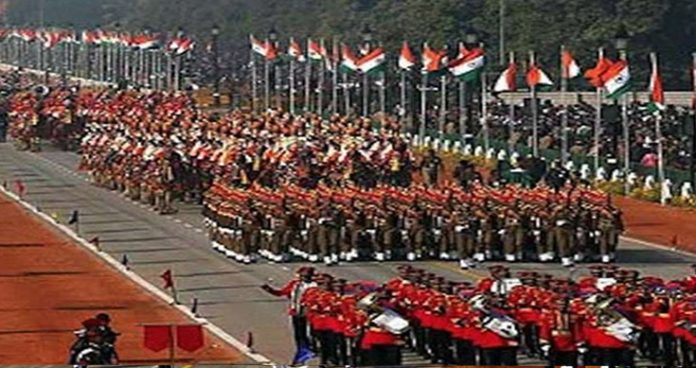On the eve of 26 January 1950, at the Irwin Amphitheatre now known as Major Dhyanchand National Stadium, India saw the birth of a resounding tradition that marks the birth of the Indian constitution and also marks the day when India became a Sovereign, Socialist, Secular, and the Democratic Republic.
This historic day would be better described in the words of Dr. Rajendra Prasad who at Irwin Amphitheatre stated that “Today, for the first time in our long and chequered history, we find the whole of this vast land…brought together under the jurisdiction of one constitution and one union which takes over responsibility for the…men and women who inhabit it.” This day witnessed 3000 disciplined soldiers marching steadily in the shadow of 100 aircraft.
Since this day Rajpath became synonymous with the Republic day parade. If one is an Indian the first thing one would want to do every 26th January is to sit and watch the majestic marching contingent of various regiments of Indian armed forces and eye-catching tableaux at the Republic day parade.
One is often faced with the question Why do we have a Parade on republic day instead of heavy fireworks or a feast or a celebration of a different sort? If one has the answer to this question, they deserve a pat on their back if not, let’s delve into some interesting facts about the republic day celebration.
One must have noticed that the Republic day parade besides showcasing the military display of forces and weapons, also presents a cultural pageant which Nehru viewed as an ideal occasion to display the cultural diversity of India. The cultural displays and programs organized on Republic day highlight the role of the state in protecting and promoting culture. Special attention was given to displaying and promoting the culture of those groups whom Nehru understood as “neglected groups”. One must have felt ecstatic at the sight of various folk dancers performing at the Republic day parade, so the question here is why do we see them at the parade? the focus on folk culture was not just part of an effort to invent cultural tradition for post-independence India but also enables the state to present itself as the guardian and the benefactor of all minority groups.
Why do parades have tableaux of various states?
In Nehru’s word ” the concept of this procession and exhibition should be there in the parade to demonstrate both the unity and great variety and diversity in India, in addition to these each state could represent some distant future of its own in the tableaux or the exhibition or both. Thus, the procession would be a moving Pageant of India in its rich diversity.” By allowing each state to design its own cultural float and choose its own marker of cultural identity this diversity pageant effectively functions as a “plebiscitary practice”. By showcasing such intrinsic diversity rather than homogeneity this section of the parade also presents the image of the Indian nation as an “expression of collective free will”.
Why parades? To answer this burning question let’s delve into the time when Indian armed forces got transformed from an imperial army to an army of a sovereign Nation-state. And the armed forces parading on the Rajpath was thus marked by the attribute of timelessness. They were presented as ever ready, ever reliable and unchanging: as willing and able to serve the state at all times. Moreover, this emphasis on military continuity across time also consolidated an understanding of the state in similar terms of permanence and constancy, as the institution authority that has always commanded the allegiance and the service of the army, regardless of his political party is in power or whether imperialism or National sovereignty is the defining attribute of the state.
Coming to the most celebrated part of the parade, instilling a sense of patriotism the various contingents of Indian armed forces march on the Rajpath, dressed in their distinctive ceremonial outfits and led by the marching bands. The emphasis here was on the undifferentiated unity of the armed forces as embodied in the identical marching styles of all the soldiers and the uniform structure of each contingent.
Thus, this tradition of showing the constancy of the armed forces and the disconnection of various cultural groups, despite their intrinsic diversity, from social and political processes of change and contestation is the main motive behind including the parade on this historical day when India we know today finds its genesis.







